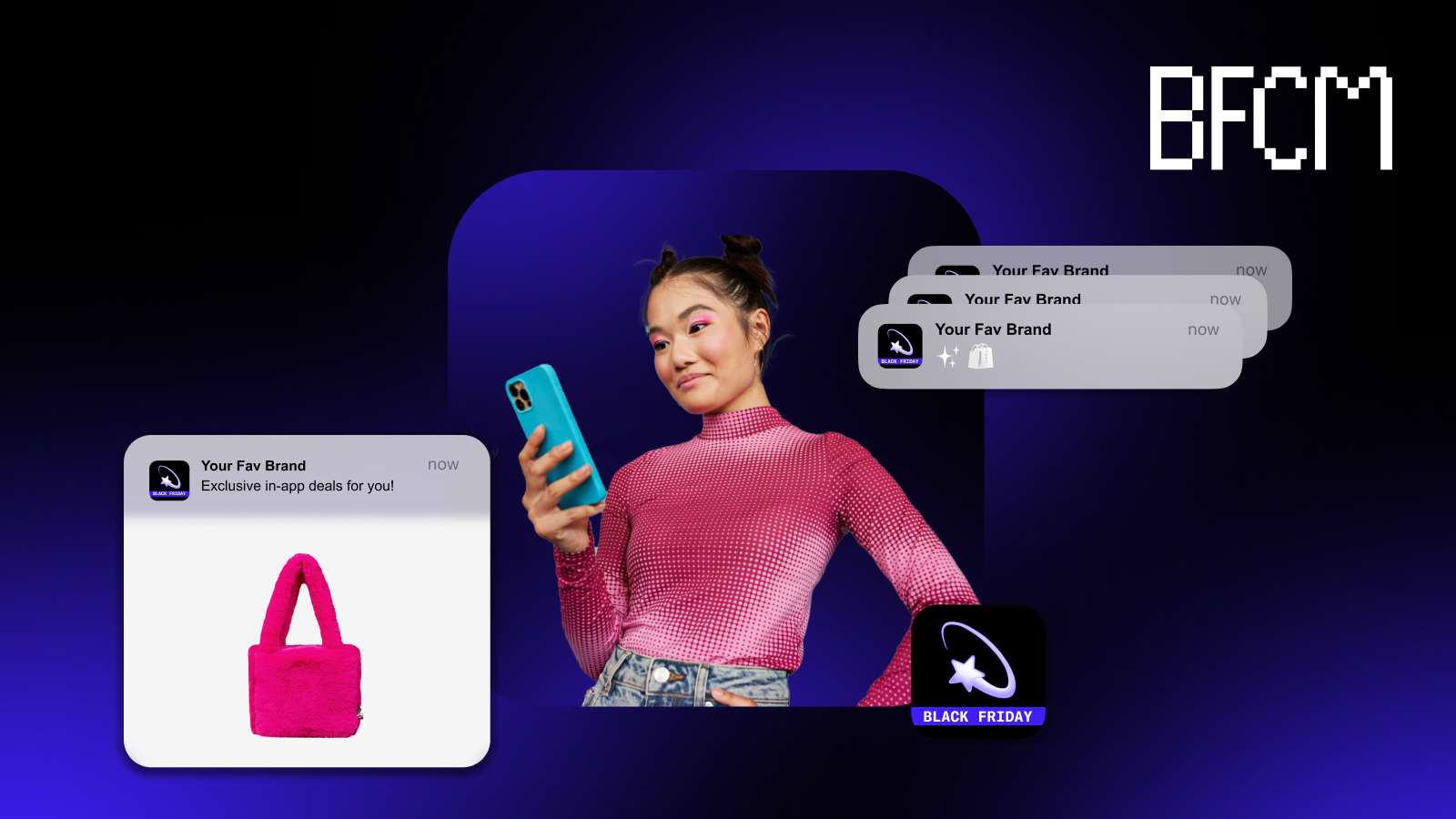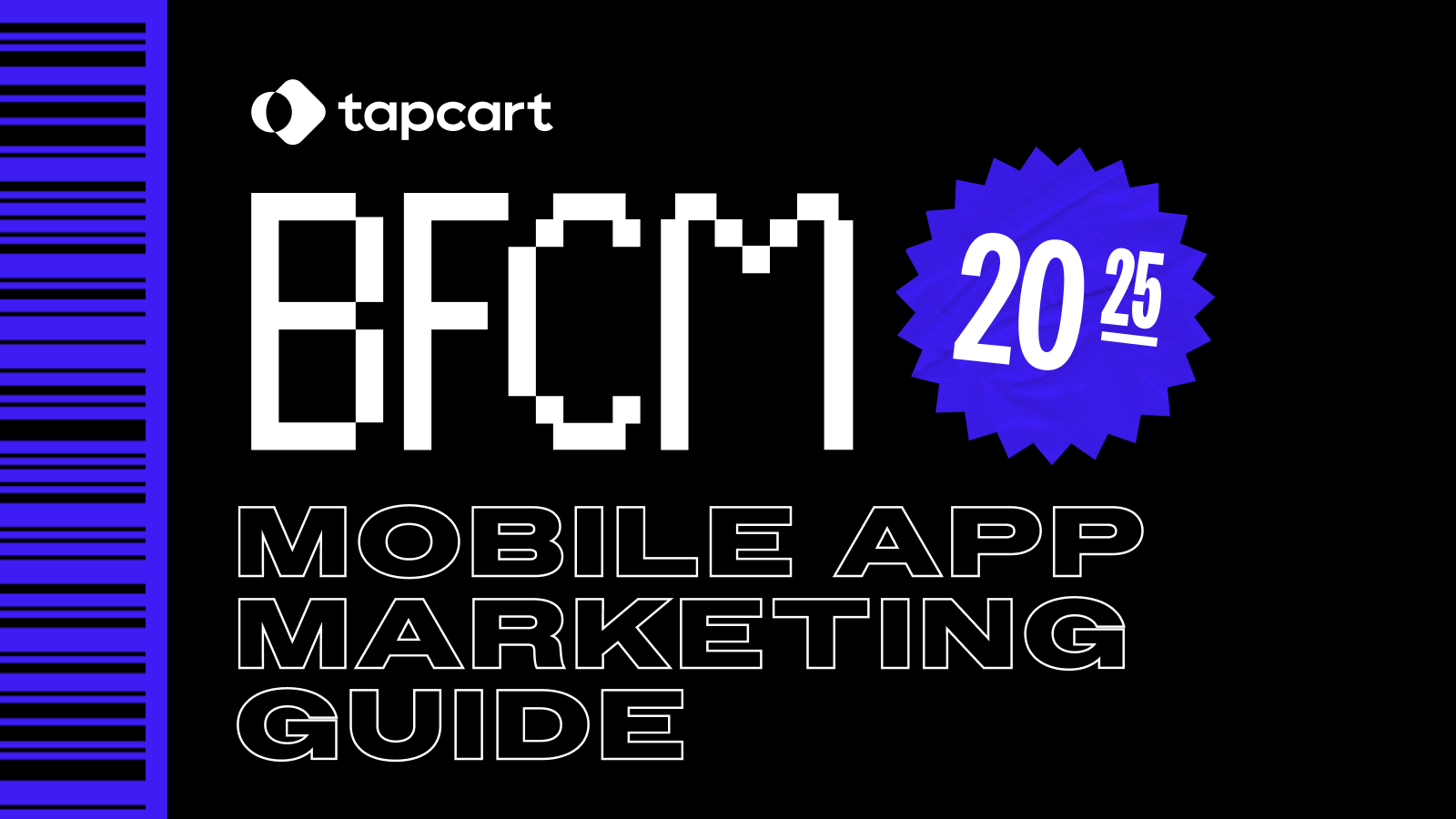
The BFCM Shift: From Flash Sales to Lifecycle Strategy
In 2024, over 60% of consumers began their holiday shopping before Cyber Week, according to Tapcart's latest report . That number is rising every year.
Combine that with a relentless CAC surge—which over 90% of enterprise marketers list as their top concern —and it's clear that acquisition-only playbooks are outdated. Enterprise brands are shifting toward retention-centric experiences that activate long before BFCM.
Mobile Apps Are the New Retention Engine
According to Bain & Company, apps increase conversion rates by 3x compared to mobile web for returning users. A study by CleverTap found that personalized push notifications improve retention rates by up to 5x over generic messages (source). These insights confirm what many enterprise marketers already suspect: mobile apps are the most powerful channel for long-term retention and customer lifetime value.
Owned, always-on, and conversion-optimized, mobile apps are driving:
- 2–4x higher conversions than mobile web (source)
- 2.2x reorder rates from push notifications over SMS or email (source)
- Zero CAC on every app-based re-engagement
Apps offer what SMS and email can’t: home screen presence, direct messaging, and seamless loyalty integration. They also power advanced personalization through features like App Studio blocks, tiered VIP flows, and event-triggered push notifications.
According to Tapcart's BFCM Consumer Data Report, mobile shopping apps are overwhelmingly the top choice for holiday shoppers in 2024. 81% of consumers plan to use mobile shopping apps during BFCM, compared to only 68% in the past two years. Meanwhile, shopping via desktop browsers is declining, with only 50% of respondents planning to use them — down 7% from 2023. Mobile is the only channel that allows for real-time re-engagement, high intent targeting, and zero-CAC loyalty-building all in one experience.
How Stadium Goods Used a Mobile App to Capture Demand Spike and Build Loyal Customers
Stadium Goods built their BFCM app strategy on one goal: increase conversion without increasing spend—and they delivered. The app now drives:
- 2x higher return rate on app vs. web
- 25% higher AOV from app users
- 20% of total revenue (up to 30% during major sales events)
By launching with Tapcart, Stadium Goods created a channel that keeps up with trend-driven demand, like viral sneaker moments tied to pop culture.
Kyle Patel, Head of Ecommerce, explained:
“If somebody’s going to download your app, they probably don’t kinda like you—they really like you. If I get you to purchase on my app, you’re twice as likely to come back and buy again.”
They've embraced app-only campaigns, sending over 8 million push notifications and pre-scheduling BFCM offers with Tapcart’s App Studio. The result is an agile, high-performing revenue channel optimized for loyalty and lifetime value.
Speed is everything for a brand that thrives on cultural moments and shifting trends. With Tapcart, Stadium Goods can get products live in hours instead of days or weeks, allowing them to feature trending products while demand is at its peak.
“We can lean in on hype moments that happen. Anyone on our mobile app can have the most up-to-date products and information very quickly. We've gone from weeks to delivering experiences to hours and days. That's been the biggest benefit for us.”
Kyle Patel, Head of Ecommerce at Stadium Goods
This agility also extends to testing, promotions, and customer engagement. The ability to quickly iterate, adjust, and optimize means Stadium Goods can experiment with strategies that keep their customers engaged and coming back.
.png)
Why the Smartest Brands Are Starting Now (Q3)
Retention doesn’t start in November—it starts in July. Enterprise brands that win BFCM are the ones who lay their foundation months in advance. Leading brands use Q3 to:
- Launch install campaigns across paid, onsite, email, and SMS
- Test push notification timing and messaging for different personas
- Set up app-exclusive BFCM blocks like gift guides, bundles, and early access sales
- Identify VIP segments through pre-holiday engagement and build tiered offers
💡 Data point: In 2024, 81% of BFCM shoppers planned to use a mobile app, up from 68% in 2023.
This isn’t just a Q4 play—it’s a Q1 growth engine. App adoption now increases:
- Holiday retention: App-exclusive campaigns, loyalty offers, and push reminders drive post-sale engagement.
- Customer lifetime value: McKinsey reports that strong loyalty ecosystems drive up to 2.5x higher LTV.
- Post-BFCM reactivation: Users acquired in Q3 can be nurtured through personalized, zero-CAC re-engagement flows—driving long-term value through Q1 and beyond.
Q3 is the moment to build your audience, test engagement, and prime the app as your top channel for November and Q1 retention.
Brands like Sunday Swagger, which launched an app-exclusive campaign just 10 days before Black Friday, saw:
- 82% spike in daily active users
- 107% increase in sessions
- 25% increase in in-app conversions
The sooner you launch, the more time you have to fine-tune your user flows and campaign structure. Q3 is about gaining momentum before the floodgates open.
The 3-Phase Mobile App Prep Framework
- Acquire: Launch an app install campaign across paid social, email nurture flows, SMS, and your homepage. Pro-tip: Use urgency-driven incentives to encourage early adoption and promote exclusive app-only content and sneak previews to create demand.
- Engage: Set up a multi-touch push notification strategy, including cart abandonment flows, product drop alerts, loyalty incentives, and educational content blocks. Pro-tip: sync with Klaviyo to seamlessly integrate your process. Test timing, creative formats, and messaging hooks now so you know what converts during BFCM.
- Segment: Use early engagement data to identify high-intent users and build behavioral segments (early-bird shoppers, VIPs, discount-seekers). Deploy targeted flash-sale lists and preview audiences to maximize LTV and conversion rates.
Each phase lays the groundwork for:
- Higher AOVs through tailored offers
- Greater retention via loyalty loops
- Lower reliance on paid ads during Cyber Week
Execution in Q3 means activation in Q4 and long-term growth in Q1.
Final Word: The Long Game Belongs to the Prepared
Enterprise brands like Volcom, Stadium Goods, and LSKD aren’t building apps for November—they’re building for January, February, and beyond. The eCommerce teams playing the long game are betting big on mobile infrastructure now, not later.
Whether your BFCM goals are CAC efficiency, higher AOV, or stronger retention, the brands that win in Q4 are already investing in Q3.
Want to get ahead? Book a strategy session with Tapcart’s mobile experts or check out our BFCM Mobile App Marketing Guide.




.png)













